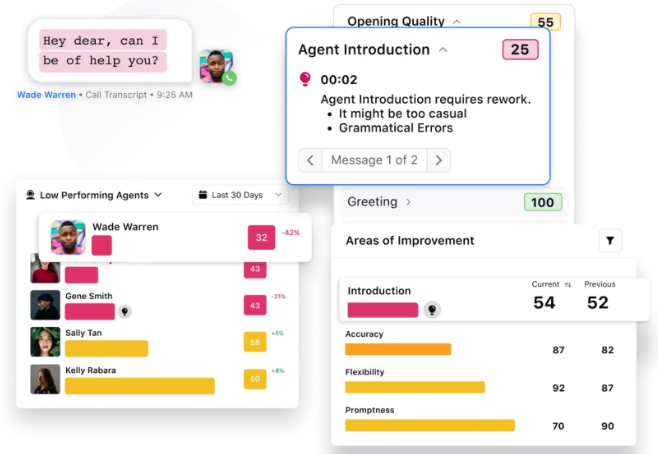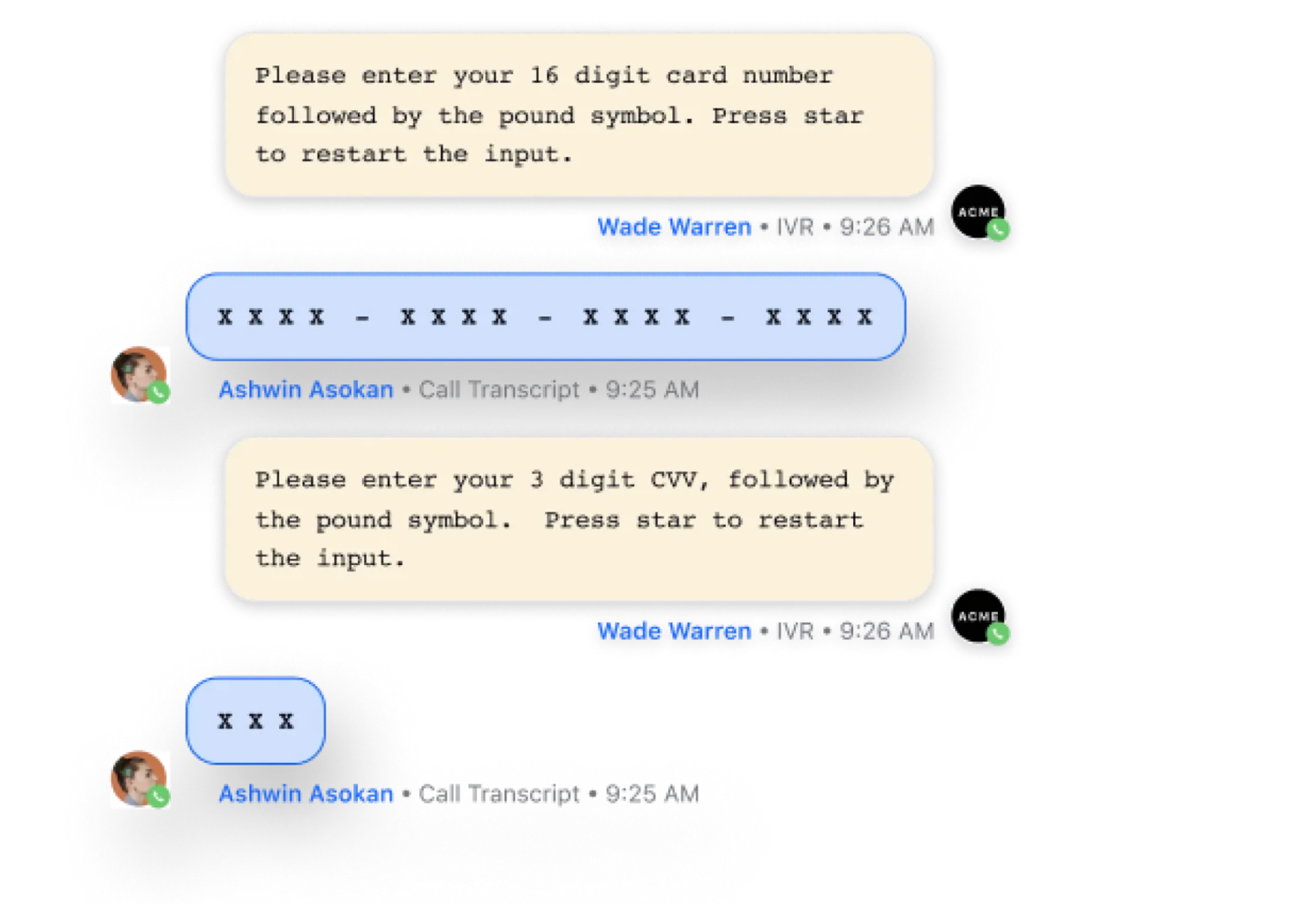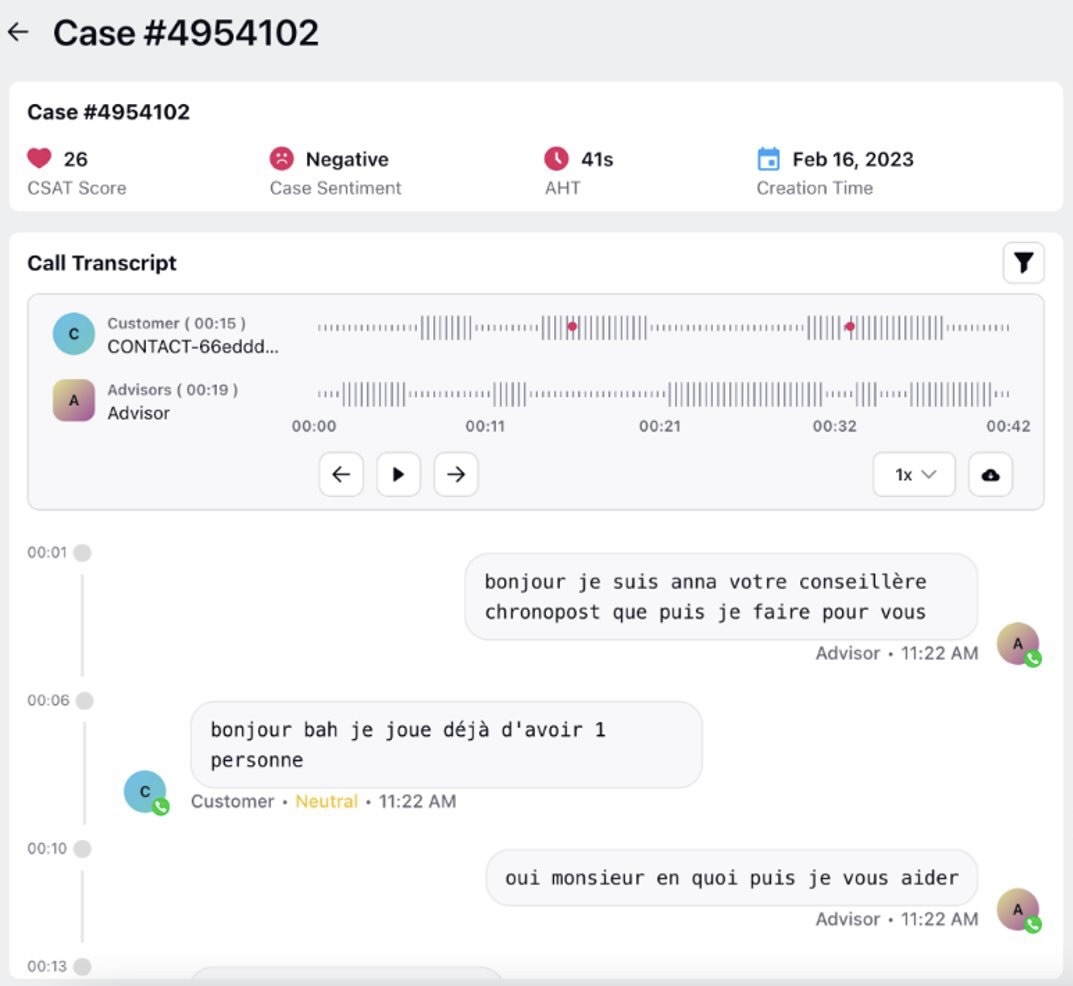- What is voice analytics?
- How voice analytics differs from speech analytics
- Benefits of voice analytics in contact centers and call centers
- The science behind the working of voice analytics
- How to use voice analytics for businesses [Challenges + Solutions]
- Catch every call detail with Sprinklr’s Voice Analytics
What is voice analytics?
Voice analytics is a sophisticated technology that decodes, analyzes and draws conclusions from voice data collected during customer interactions to gain insights and improve customer experience.
Voice analytics has journeyed from simple speech-to-text transcription to becoming an empathetic listener. Initially, it was about documenting dialogs via speech analytics, then it expanded to understanding semantics. Today, it can interpret emotions, intentions and contextual nuances via sentiment analysis.
With voice recognition, natural language processing (NLP) and artificial intelligence, voice analytics enables a better understanding of customer needs, preferences and behaviors.
How voice analytics differs from speech analytics
The main differences between voice analytics and speech analytics, which together, are a subset of call center analytics are as follows.
Criteria | Speech Analytics | Voice Analytics |
Purpose | Primarily used for transcribing speech to text. | Used for interpreting the emotional and behavioral aspects of voice, along with speech transcription. |
Data Type | Mainly deals with structured data, such as transcribed text. | Handles both structured data (transcribed text) and unstructured data (tone, pitch, pace). |
Analysis | Analyzes the content of the speech, focusing on the words used. | Analyzes the tone, emotion and intent behind the speech, along with the content. |
Technologies | Uses technologies like Speech Recognition and NLP. | Employs a broader set of technologies, including Speech Recognition, NLP, AI, Sentiment Analysis, Machine Learning and even Biometrics in advanced cases. |
Outcome | Helps in identifying keywords, trends and patterns in the spoken content. | Aids in understanding the sentiment and emotional state of the speaker. |
Benefits of voice analytics in contact centers and call centers
Call center voice analytics is the bedrock of modern contact centers that use Interactive Voice Response or IVR. Here are the top benefits of using it in your contact or call center.
Efficiency and cost reduction: Automating the transcription process through voice analytics greatly reduces manual labor. Real-time analytics dashboards also enable managers to focus on strategic interventions rather than sifting through raw call data. In turn, this translates to tangible savings in operational costs and time.
💡 Pro tip
Deploy an advanced conversation analytics solution that gives managers and supervisors full visibility into how agents are performing with quality scores, suggested improvement areas and insights to inform custom learning plans on an agent-by-agent basis.

Regulatory compliance: By programmatically detecting specific keywords and phrases in call transcripts, voice analytics ensures that agents fulfill industry and government regulations and adhere to their SLAs. This technology aids in the early detection of compliance breaches, allowing timely mitigation. Check this video out.
Policy feedback: Through nuanced tone and emotion detection, the technology measures immediate customer response to recent policy shifts or marketing campaigns. It presents a microscopic view of the customer's sentiment toward any change or initiative the business makes.
Complaint tracking: Advanced text analytics categorizes complaints, linking them to specific issues or products. Complaint management facilitates targeted problem-solving, leading to quicker resolutions and enhanced customer happiness.
Product development: Automated speech analysis recognizes patterns in customer requests or suggestions, providing data-driven insights into potential product enhancements or new offerings that align with market demand.
Competitive analysis: By segregating and analyzing competitors or alternative products, voice analytics provides a clear view of competitive positioning. You can then strategically address gaps, benchmark against competitors or capitalize on their weaknesses.
Performance assessment: Voice analytics integrates metrics such as sentiment score, average hold time and call resolution speed to quantify an agent's efficacy. Advanced algorithms can even detect conversational patterns linked to successful call outcomes, refining call center agent training modules.
The science behind the working of voice analytics
Contact center analytics is a complex concoction of various technologies, like speech analytics, that ensure your service division runs smoothly. Here are the features of voice analytics technology.
1. Speech recognition and conversion
Converting spoken words into text and vice-versa is foundational for documentation and system responses in contact centers.
Automatic Speech Recognition (ASR): ASR technology is designed to convert spoken language into written text. It uses algorithms trained on vast amounts of audio data to recognize patterns in speech.
Text-to-Speech (TTS): The inverse of ASR, TTS takes written text and converts it into speech. It's utilized when systems, like voice bots, need to communicate with users vocally.
Phonetic analysis: Phonetic analysis focuses on the study of phonemes, the smallest units of sound in a language. It helps identify and understand pronunciation patterns.
Word spotting: Word spotting technology enables the detection and localization of specific words or phrases within an audio recording, even in the absence of complete transcription.
2. Natural Language Understanding (NLU) and Processing
Dissecting and understanding human language nuances is pivotal for effective customer interactions.
Natural Language Processing: NLP is the intersection of computer science, artificial intelligence and linguistics. It essentially helps in analyzing customer queries and ensuring agents or automated systems respond accurately.
Syntax analysis: Breaks down sentences into grammatical components to understand their structure.
Semantic analysis: Focuses on understanding the meaning of language.
Pragmatic analysis: Considers context and implied meanings in communication.
Topic modeling: This identifies topics within a large volume of text. For voice analytics, this can reveal what subjects are commonly discussed.
Keyword spotting and event detection: Recognizes specific predetermined words or phrases in spoken language. Detected keywords can help categorize calls and trigger specific actions.
Let’s take an example.
Amidst a shopping spree, Allison struggles with her credit card, bewildered because she knows she's within her limit. As she contacts the call center, NLP discerns her distress.
Syntax analysis breaks down her specific problem statement, while semantic analysis zeroes in on the keyword "credit limit."
Pragmatic analysis catches Allison's undertone of urgency. Topic modeling slots the conversation under "Credit Card Glitches."
Hearing the terms "trouble" and “won't allow," keyword spotting swiftly connects Allison to Leslie, the card specialist, who's equipped with insights to guide Allison back to her retail therapy.

Also Read: How NLP Helps Improve Customer Service Quality
3. Emotion and speaker analysis
Capturing the emotional tone and speaker identity enhances the personalization and quality of interactions. Sentiment analysis detects emotions in a caller's voice, allowing agents to adjust their approach.
Acoustic analysis: Evaluates the speaker's tone, pitch and speed to infer emotions.
Lexical analysis: Examines word choice to deduce sentiment.
Speaker diarization: Differentiates and segments different active speakers in a single audio source.
4. Data management and real-time analysis
As calls flow in and out, it's essential to process, summarize and retrieve information quickly.
Audio indexing: Enables swift search through calls by tagging pivotal moments or keywords, optimizing call retrieval for analysis.
Real-time analytics engine: Instantly evaluates voice interactions, empowering agents with actionable insights during live calls.
Database Management Systems (DBMS): Centralizes and efficiently handles expansive volumes of voice data, ensuring streamlined access.
Call summarization: Generates brief overviews capturing the essence of customer-agent conversations, aiding quick reviews.
🚀Use Generative AI to automate call summarization
GenAI-enriched call center software like Sprinklr AI+ can summarize calls and interactions while highlighting sentiment and giving next-step recommendations, saving your agents from tedious after-call work.
5. Voice biometrics and security
Security is of utmost importance, especially in data-sensitive industries like BFSI and healthcare. Voice biometrics ensures that interactions are genuine, and confidential data remains secure.
Speaker verification: Confirms the identity of callers using their unique voice prints, enhancing security.
Voice encryption: Protects voice data from potential breaches, ensuring customer confidentiality.
Liveness detection: Ensures the voice is from a live person and not a recording.
💡 Pro tip: It’s recommended that you choose voice analytics software that complies with all security and privacy protocols like CCPA, GDPR, Cyber Essentials, PCI DSS, etc so you can rest easy knowing your customer data is in trusted hands. Moreover, opt for vendors with a robust and public trust center that lays out compliance-related information with transparency.

6. Development tools and integration
Customer service is dynamic and a game of time. To ensure your customers are helped in time, your voice analytics tool must integrate seamlessly with your tech stack.
SDKs and APIs: Allow contact centers to integrate voice analytics capabilities into existing systems or develop custom applications.
Platform integration: Ensures seamless interplay between voice analytics and existing software like CRMs and ERPs, streamlining your data flow for quick informed decisions.

How to use voice analytics for businesses [Challenges + Solutions]
While implementing contact center voice analytics, you might find yourself dealing with technical issues. Here are some common challenges you might face with solutions to overcome them.
🗣️ Challenge 1: Low-quality audio input
Voice analytics heavily depends on the quality of audio input. Issues such as background noise, call interference or unclear pronunciation can distort the audio input, reducing the accuracy of analysis.
Solution: Your voice analytics solution could include the following features to enhance audio quality and clarity.
Noise reduction: Eliminates background noise to ensure clear voice data.
Echo cancellation: Removes echoing effects in voice data.
Speech enhancement: Amplifies voice signals and reduces non-voice noise.
📍 Challenge 2: Regional and dialectical usage
Voice analytics solutions are designed to understand and interpret speech based on standardized linguistic rules. It becomes challenging in a diverse, multilingual setup like a contact center, where customers might call in using local dialects, accents or slang.
Solution: Employ an inbound contact center software that uses ML models specifically trained on diverse accents, dialects and industry-specific jargon.
Continually update the model with new language data. Augment the system's dictionary with unique terms, abbreviations and acronyms specific to your industry and target region for high precision.
Here’s an example.
At a bustling contact center, Billy, a customer from rural Louisiana, reports his "internet's crawfishing" — a local metaphor meaning it's not functioning.
The standard voice analytics might stumble, but this AI, trained on various accents and region-specific idioms, deciphers Billy's unique phrase.
Continuously updated with regional dialects, the system correctly interprets his complaint as "internet issues,". It then guides Billy, asking about his router's lights or if he's tried restarting it, showcasing how linguistically adaptive AI can autonomously handle common queries.
🧐 Challenge 3: Limited call context understanding
Voice analytics may struggle to comprehend the context of a conversation fully, misinterpreting customer sentiment or missing subtle cues.
Solution: Implement a hybrid model of AI and human involvement. Utilize AI to handle high-volume data processing, identify patterns and flag potential areas of concern. Simultaneously, employ human analysts to review these flagged areas, provide context and correct any errors.

⏰ Challenge 4: Time lag in analytics
Vast amounts of audio data that calls generate day in and day out can cause processing delays.
Solution: It’s important that you focus on these key action points to avoid analytical hold-ups.
Real-time analytics: This feature transcribes and analyzes conversation data instantly, providing live insights that enable immediate service adjustments.
Streamlined data storage: Efficient data storage solutions make access to and processing of call data quicker — reducing any potential lag.
Dynamic resource management: A sophisticated voice analytics system ensures real-time action with its ability to adapt and allocate resources as per the call volume and complexity.
Catch every call detail with Sprinklr’s Voice Analytics
In the bustling hubbub of customer calls, every interaction hides a gem of insight.
Yet, finding these gems amidst the toppling volume of data is not easy.
Enter Sprinklr's AI-driven conversational analytics. An all-in-one capability that changes the way you perceive and interact with your voice data.
Use it as your single source of truth. Tame the chaos of customer call data. Bring lucidity and strategy to your decision-making.
Frequently Asked Questions
Thank you for contacting us.
A Sprinklr representative will be in touch with you shortly.
Contact us today, and we'll create a customized proposal that addresses your unique business needs.
Request a Demo
Welcome Back,
No need to fill out any forms — you're all set.



